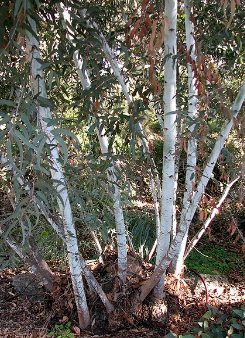Willow Planting Preventing Soil Erosion & Flooding
Willow Planting Techniques for Soil Erosion

As many of us across the UK are experiencing persistent wet weather and high water tables, land owners and gardeners are looking for methods to help reduce waterlogged or flooded ground and soil erosion.
Willow can be used as a form of bioengineering, there are several planting techniques which can be used in different situations such as Short Crop Rotion or dense planting on flat or sloped sites, Willow Spiling for river banks and the use of Willow Faggots/Fascines on steep slopes.
Planting Willow can be an easy and cost effective solution to help with these flood and erosion problems. Willow trees are often seen growing alongside river banks, this is because are very thirsty plants and enjoy have wet roots.
Willow cuttings can be planted as Setts (1ft/30cm cuttings) or as longer Whips (4-10ft/1-3m long cuttings). Planting is quick and easy requiring no digging. The Willow whip is simply pushed 1ft/30cm into the ground where it will happily self-root.
Although planting Willow will not stop areas from flooding completely, they can help reduce the water table to lessen flooding and can soak up water so that flooded areas subside quicker.
Willow is also used to help reduce hillside and river bank erosion, planted closely they form a tight net of roots which holds the soil together. A more advance method called Willow Spiling uses woven hurdles from living willow and back filling with earth to create tiered walls of living plant material.
NOTE: We are able to supply Willow whips and cuttings but are by no means experts on flood defence! We cannot give specific advice on planting techniques when using Willow to protect from water damage.
Willow can be used as a form of bioengineering, there are several planting techniques which can be used in different situations such as Short Crop Rotion or dense planting on flat or sloped sites, Willow Spiling for river banks and the use of Willow Faggots/Fascines on steep slopes.
Planting Willow can be an easy and cost effective solution to help with these flood and erosion problems. Willow trees are often seen growing alongside river banks, this is because are very thirsty plants and enjoy have wet roots.
Willow cuttings can be planted as Setts (1ft/30cm cuttings) or as longer Whips (4-10ft/1-3m long cuttings). Planting is quick and easy requiring no digging. The Willow whip is simply pushed 1ft/30cm into the ground where it will happily self-root.
Although planting Willow will not stop areas from flooding completely, they can help reduce the water table to lessen flooding and can soak up water so that flooded areas subside quicker.
Willow is also used to help reduce hillside and river bank erosion, planted closely they form a tight net of roots which holds the soil together. A more advance method called Willow Spiling uses woven hurdles from living willow and back filling with earth to create tiered walls of living plant material.
NOTE: We are able to supply Willow whips and cuttings but are by no means experts on flood defence! We cannot give specific advice on planting techniques when using Willow to protect from water damage.





